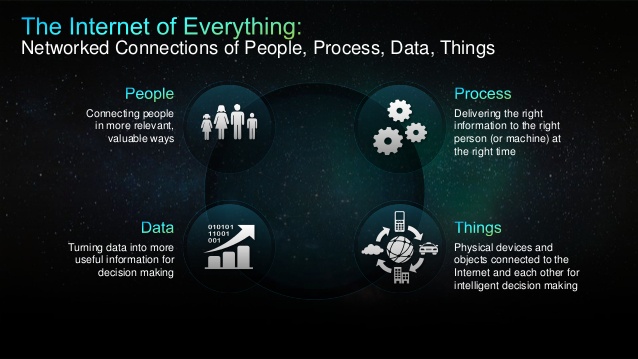Five technology trends that will shape 2019
Trend 1
Easier access will accelerate adoption of game-changing technologies
Until now, our industry has spoken about innovative technologies somewhat theoretically, without providing a clear picture of how these powerful new innovations will be used.
This has left people without a solid understanding of how they will ultimately manifest in our work and personal lives. Think analytics, machine learning, artificial intelligence, blockchain, and containers, just to name a few.
That’s starting to change. The application of game-changing technologies is becoming more pervasive and their adoption is growing steadily. I believe that they’ll be firmly embedded in many of the core processes and technologies we use, within the next 3-5 years.
Last year, I predicted that artificial intelligence (AI), machine learning, robotics, and virtual and augmented reality would start to converge to deliver compelling outcomes. Over the last year, we’ve seen this trend coming to fruition and I expect it to accelerate.
One reason that adoption is increasing, is an improved understanding of how and where to use such technologies. And of course, we’re also seeing growth in the number of skilled people who know how to leverage them.
Easier access is already accelerating adoption of key technologies
Another important contributing factor for more rapid adoption is improved access to such technologies, both from a platform and cost perspective.
The hyper-scale cloud providers at an infrastructure-as-a-service (IaaS), platform-as-a-service (PaaS), and software-as-a service (SaaS) level, such as Google, Microsoft, Amazon, and Salesforce are starting to embed these capabilities into their offerings, or making them available as a platform to be used by third parties.
This is helping businesses overcome the hurdles they’ve faced in the past. Now they can get access to game-changing technologies without having to invest in building their own algorithms and platforms. Instead they can focus on how to exploit these technologies and speed up the rate at which they get business value.
Bots and robotic process automation are already becoming part of our everyday working and personal lives. It’s relatively simple to create a bot that will access all a company’s sales support systems, and provide a consolidated dashboard.
These dashboards can be unique to each customer service employee – paving the way for more informed decisions. This can now be taken to the next level, for example, by leveraging an AI application like Salesforce’s Einstein.
 A robot at work
A robot at work
This tool can make recommendations and predictions on next actions and outcomes based on unique business processes and customer data. Individuals simply can’t access these kinds of insights without this level of assistance. It’s changing the way we work, the service levels we can provide, and our effectiveness.
Bots have been used in omnichannel customer service centres for some years now, but even this world is being re-engineered by the introduction of AI algorithms that can assess the emotive state of a customer interaction.
This is achieved by assessing words, phrases, tone, or pitch across multiple channels, either spoken or written, to assess the emotional state of the customer, in real time. The moment a negative emotive interaction is identified, appropriate action can be taken, either by changing the channel or method of interaction.
3D printing has also been around for some time, mainly based on resin or epoxy-based materials, but we’ve seen this move quickly to metal-based 3D printing, which is opening up a multitude of new use cases. General Electric is one of the trailblazers of 3D metal printing.
They’re already using it to print fuel nozzles for jet engines. Nike are using it to adapt the spikes on their running shoes to ensure the most appropriate strength, fit, and flexibility required by the customer, depending on what surface they plan to wear them.
Easier access to game-changing technologies is going to accelerate digital transformation, while #blockchain and #IoT will finally start realising their potential. Discover 5 key trends driving change within the #tech sector in @DimensionData's report. Tweet this
Trend 2: Identity will emerge as the killer app for blockchain
There’s been a massive amount of investment in blockchain in the last 12 months. In the financial and capital markets, blockchain-based platforms are rapidly starting to dominate. We’re now starting to see this extend to additional settlement areas such as equity trading. There’s also been a proliferation of blockchain-based smart contract platforms across multiple vertical segments, both in the private and public sectors.
The market is starting to see ecosystems of value emerging around the blockchain platform vendors, such as R3/Corda, Ripple, and Ethereum.
Platform providers are beginning to align to verticals or specialised applications, and it’s interesting to observe the emergence of ecosystem incubators developing additional applications for a specific vertical, on a particular platform.
I believe identity management will emerge as one of the killer apps for blockchain in the next 3-5 years. It’s a topic that’s never quite been resolved in our industry. Most of the major cybersecurity incidents that have occurred in the last few years have involved breaches of people’s personal identity information.

I believe that moving identity management into a blockchain environment could offer a solution to many of the current challenges, and in addition, open an entire new value chain, centred on identity. The high levels of encryption and the dispersed nature of data in a distributed ledger, are inherent to a blockchain. This immediately changes the level of cyber safety that can be offered, certainly solving one problem.
Consider the other value chains that could emerge … perhaps allowing individuals to truly own and control their identity and its attributes, and selectively allowing the use of such attributes by third parties in transactions or interactions. This could fundamentally change how we conduct financial transactions or even sensitive interactions regarding our health ─ all attributes relating to our identity.
These models have the potential to extend into much wider ecosystems, and drive monetisation of data related to identity attributes. Take a simple example: a high school might become an important third-party validator of the educational level that their students achieved ─ an attribute of somebody’s identity. Allowing the school to participate in a transaction, in return for a small payment, will, for the first time, enable the school to monetise data that they collect and own, and open up a revenue stream they never considered before.
There’s no doubt that blockchain-based innovation will expand and accelerate over the next 3-5 years.
Trend 3: Companies will learn how to extract value from data, while respecting privacy
Data value management is a topic that will dominate our industry in the next 3-5 years.
Today, almost every company has access to large volumes of data. But it’s what they do with that data that will define the business models of the future. This isn’t necessarily a new statement, but the context and impact has escalated dramatically. Current business models will be re-engineered by the value of the data that’s generated by existing activities. The value of the data will supersede the value of traditional revenue activities ─ an interesting concept in its own right.
Let’s take a transport operator as an example. Traditionally they’ve generated their revenue from passengers’ fares. But as they implement more intelligent systems, and connect the data elements to one another, the data becomes the primary source of value, not the transport service.
They know who their passengers are, where they’re going and coming from, and when. If they collect and enrich this data they could monetise it by making it available to a host of other businesses for more targeted service delivery – at a premium. The result? An entirely new business model and revenue stream.
The concept of data value management will become one of the most important investment areas over the next 3-5 years due to its monetary value potential, but it will also become one of the major driving forces of investment to create more data. Businesses have strived to become more digital in nature, but those that excel in managing the value of their data, re-engineering their business models, and establishing new revenue streams, will become the true digital business heroes of the future.
Monetisation of data must respect privacy
Of course, ensuring that people’s personal particulars aren’t shared illegally is critical for any business considering going down this path. Regulations regarding data privacy continue to grow, both at a country and vertical industry level. Fortunately, the increasing interest in data value management is spurring massive innovation to address the issue of privacy.
Data sources are growing, the granularity of the data itself is improving, and because of this the potential value that can be extracted is growing even faster. The increasing challenge is how to derive insights from disparate and distributed data sources, without infringing regulatory or basic confidentiality guidelines. Anonymised data analytics at scale is an ongoing challenge and finding ways to gain the rich insights without sharing source data or causing breaking the law will become barriers to growth, if not solved.
Working with our parent company, NTT, we’re fortunate beneficiaries of deep R&D investment in this area, and have access to a secure computation platform known as San-Shi. It uses secret sharing and secure multi-party computational principles to allow data scientists to aggregate and analyse massive distributed data sets without ever revealing the source data to the analyst. Judging by the interest we’ve received in this solution, we believe this is an area of increasing importance to the wider business community, as they strive to unlock the value of data.
Trend 4: The Internet of Everything will change our lives for the better
The number of things connected to the Internet in 2008 exceeded the number of people on earth. By 2020, it’s expected that 50 billion things will be connected, and this goes way beyond ‘things’, it becomes ‘everything’ or simply the Internet of Everything (IoE). The IoE ecosystem will connect the online and physical worlds in ways we’ve never imagined and society will become increasingly technology-driven as a result. There’s not a part of our lives that will go untouched. Automation will take on a new meaning, data value management will be accentuated by the richness of data, and AI will ingest the data to drive intelligent insights and outcomes we’ve never seen before.

The human API will evolve
The IoE will encompass every area of our lives, transforming the way we provide healthcare, and the way we live, work and learn. It will re-engineer our lives through what we increasingly refer to as the ‘human API’ enabling us to interface with various connected systems in ways that are hard to anticipate. The scope of biometrics will expand from what we understand today, to include gestures, emotions, expressions, and many more aspects, triggering automated system reactions to complement, ease, or enhance our activities.
Leading technology innovators are already finding life-changing use cases for the IoE and human API. Dimension Data recently worked with NTT R&D and Deakin University in Australia on a project that uses virtual reality, biometric sensors, wearables, and data analytics to transform the way that firefighters are trained.
This innovation, known as the FLAIM Trainer®, reproduces all the forces and elements that impact a firefighter, connecting the virtual and the physical. It allows firefighters to train for dangerous scenarios that are difficult, expensive, and environmentally harmful to reproduce in reality. It incorporates a patented digital bio-sensing fabric developed by NTT, called Hitoe™, which provides real-time data on firefighters’ vital signs such as heart rate, stress, and fatigue. When aggregated, this data allows instructors to assess a trainee’s fitness and mental state to fight in any given fire scenario.
Trend 5: Disruption will drive consolidation among tech vendors
I foresee a period of unprecedented change and disruption for major technology vendors driven by factors largely outside of their control.
Not only are technology consumption patterns changing, but how innovation is driven, products are developed, and intellectual property is shared in an opensource and free manner. All of this is driving disruptions that are hard to predict or manage.
The emergence of new technology giants, with very different business models, is driving some of this change – and shifting the landscape at a scale not seen before. The increasing market dominance of the FAANGs – a term coined to describe Facebook, Amazon, Apple, Netflix, and Google – and a resurgent Microsoft, are leading this disruption.
adopted from dimensiondata.com













